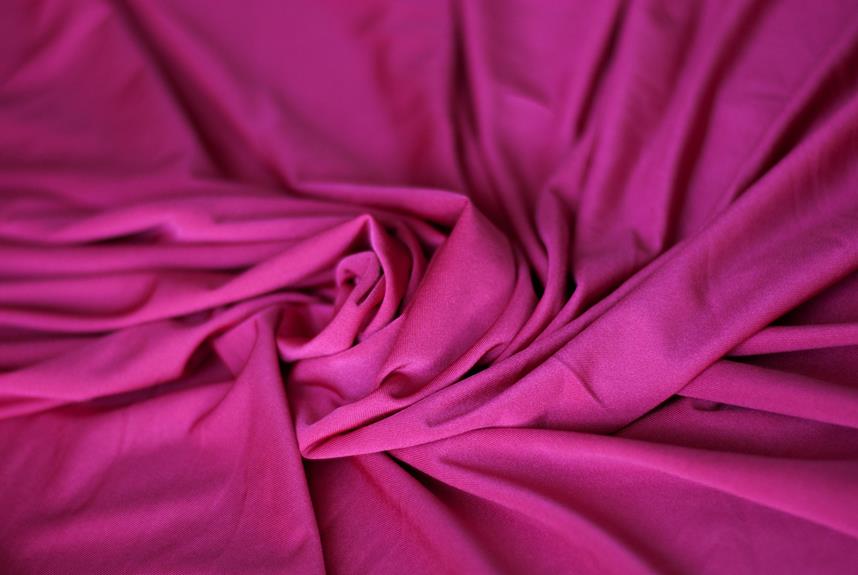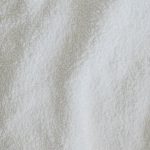When you're considering Oxford fabric versus twill, you might wonder which one truly suits your needs. Oxford fabric is known for its breathability and lightweight comfort, making it a versatile choice for various occasions. On the other hand, twill's unique diagonal weave offers a sturdier, more structured appearance that many people find appealing. Each fabric has its own set of advantages, but the right choice often hinges on specific preferences and uses. So, which fabric will ultimately stand out for you in terms of style and functionality? Let's explore the details.
Table of Contents
Overview of Oxford Fabric
Oxford fabric is a versatile and durable material, commonly used in shirts and casual wear, that features a unique basketweave construction for added texture and strength. This construction gives the fabric a distinct appearance, making it a popular choice for both formal and casual outfits. When you wear an Oxford shirt, you'll notice the fabric feels soft yet sturdy, ensuring comfort throughout the day.
One of the standout qualities of Oxford fabric is its breathability. It allows air to flow, making it an excellent option for warm weather. You won't feel stifled, even during the hottest days. Additionally, it tends to resist wrinkling better than many other fabrics, meaning you can look sharp without constant ironing.
Oxford fabric also comes in various colors and patterns, providing plenty of options for your wardrobe. Whether you prefer classic whites and blues or bold checks, you'll find something that suits your style. Plus, its durability means you'll enjoy your garments for years, making it a wise investment.
Overview of Twill
Twill is another popular fabric choice, recognized for its diagonal weave pattern that gives it a distinct texture and enhanced durability. This unique structure not only sets it apart visually but also contributes to its strength, making it less prone to wrinkling and fraying.
You'll often find twill used in items like denim, chinos, and even some upholstery fabrics, thanks to its versatility.
One of the standout features of twill is its ability to drape beautifully. When you wear clothing made from twill, you'll appreciate how it flows and fits, offering both comfort and style. Furthermore, twill fabrics come in various weights, allowing you to choose the ideal option for different occasions, whether it's a lightweight summer shirt or a heavier winter jacket.
Maintenance is another plus; twill typically resists stains and is easy to clean, making it a practical choice for everyday wear.
If you're considering fabric for your next project or wardrobe addition, twill offers a blend of durability and elegance that you won't want to overlook. Its rich texture and resilience make it a reliable option for various applications.
Key Characteristics Comparison
When comparing Oxford fabric and twill, you'll notice distinct differences in their structures that affect their overall feel and appearance.
Durability and longevity also play crucial roles in determining which fabric suits your needs best.
Let's explore these key characteristics to help you make an informed choice.
Fabric Structure Differences
Understanding the fabric structure differences between Oxford and twill can help you choose the right material for your project.
Oxford fabric features a basketweave structure, where multiple threads weave together, creating a soft, textured finish. This unique weave gives Oxford its characteristic durability and breathability, making it a popular choice for shirts and casual wear.
On the other hand, twill fabric is identified by its diagonal weave pattern. This structure is achieved by passing the weft thread over and under multiple warp threads, resulting in a tighter, more robust fabric. Twill is known for its distinct diagonal lines, which not only add visual interest but also enhance its strength and drape.
When it comes to feel, Oxford typically feels softer and lighter compared to twill, which can be slightly heavier and more structured. Additionally, twill tends to resist wrinkles better than Oxford, making it a smart choice for items that require a polished appearance.
Durability and Longevity
Oxford fabric and twill each offer unique advantages in terms of durability and longevity, making your choice crucial for the intended use. When you're assessing these two fabrics, consider their specific characteristics to ensure you select the best option for your needs.
Oxford Fabric: Known for its resilience, Oxford fabric is typically made from cotton or a cotton-blend, providing excellent resistance to wear and tear. It's less prone to fading, making it ideal for outdoor use.
Twill: This fabric features a distinctive weave that enhances its durability. Twill's diagonal pattern helps it resist wrinkles and creases, ensuring it maintains a polished look over time.
Water Resistance: While neither fabric is inherently waterproof, Oxford can often be treated for enhanced water resistance, making it suitable for rainier climates.
Weight and Breathability: Twill is usually heavier, which can contribute to a longer lifespan, while Oxford tends to be lighter and more breathable, perfect for warmer weather applications.
Ultimately, consider the environment and usage when choosing between Oxford fabric and twill, as each comes with its own set of strengths tailored to specific needs.
Advantages of Oxford Fabric
When you choose Oxford fabric, you're opting for something that's built to last.
Its durability and longevity ensure it can handle everyday wear while still looking great.
Plus, the breathability of the fabric means you'll stay comfortable no matter the season.
Durability and Longevity
Fabric enthusiasts often praise Oxford fabric for its impressive durability, making it a reliable choice for a variety of applications. Whether you're looking for clothing, bags, or home textiles, Oxford fabric stands out due to its robust construction. Its tightly woven nature helps it resist wear and tear, ensuring that your items last longer, even with regular use.
Here are some key advantages of Oxford fabric's durability and longevity:
- Tightly woven fibers: This structure helps prevent fraying and tearing.
- Resistant to stains: The fabric often has a finish that repels liquids and dirt, making cleanup easier and maintaining its appearance.
- Fade resistance: Oxford fabric retains its color well, even after multiple washes or exposure to sunlight.
Choosing Oxford fabric means investing in quality. You can trust that your items will withstand the test of time, making it a smart choice for anyone valuing longevity in their textiles.
Breathability and Comfort
Many people appreciate how breathable and comfortable Oxford fabric is, making it an excellent choice for everyday wear. This fabric features a unique weave that allows air to circulate, which helps regulate your body temperature. Whether you're at work or enjoying a casual outing, you'll likely find that Oxford fabric keeps you feeling cool and comfortable.
Additionally, Oxford's soft texture feels great against your skin. You won't have to worry about itchiness or irritation, which can often happen with other materials. This comfort extends to its versatility; Oxford fabric works well in various styles, from dress shirts to casual tops, so you can feel good no matter the occasion.
Moreover, Oxford fabric's ability to wick moisture away is another major advantage. If you're in a warm environment or engaging in activities that make you sweat, this feature helps keep you dry and comfortable throughout the day.
Advantages of Twill
Twill offers a unique combination of durability and style, making it a popular choice for various applications. If you're considering fabric options, twill has some distinct advantages that make it stand out. Its diagonal weave creates a sturdy texture that not only looks appealing but also withstands daily wear and tear.
Here are some key benefits of choosing twill:
- Durability: The tight weave resists fraying, fading, and wrinkling, ensuring your garments and home textiles last longer.
- Versatility: Twill works well in both formal and casual settings, making it suitable for everything from dress shirts to upholstery.
- Softness: Despite its strength, twill is often softer than other fabrics, providing comfort without sacrificing durability.
Choosing the Right Fabric
When selecting the right material for your project, consider factors like durability, appearance, and maintenance requirements.
Oxford fabric is known for its robustness, making it ideal for items that need to withstand wear and tear, such as bags and uniforms. If you're aiming for something that can handle heavy use, Oxford might be your best bet.
On the other hand, twill offers a softer, more refined look, which works well for clothing and home textiles. Its diagonal weave gives it a unique texture that adds visual interest. If you're creating garments that require drape and comfort, twill could be the way to go.
Think about how much time you're willing to spend on upkeep, too. Oxford fabric tends to be easier to clean and more resistant to stains, while twill may require special care to maintain its appearance.
Ultimately, the choice comes down to your project's specific needs. By evaluating these factors, you'll be better equipped to choose between Oxford fabric and twill, ensuring your final product meets your expectations in both form and function.
Frequently Asked Questions
Can Oxford Fabric Be Used for Outdoor Furniture?
Yes, you can use Oxford fabric for outdoor furniture. Its durability and resistance to wear make it suitable for outdoor conditions. Just ensure it's treated for water and UV resistance to enhance its longevity.
Is Twill Fabric Suitable for Formal Wear?
Yes, twill fabric's diagonal weave gives it a sophisticated look, making it suitable for formal wear. Its durability and wrinkle resistance also enhance your overall appearance, ensuring you stay sharp and polished at any event.
How Do I Care for Oxford Fabric?
To care for oxford fabric, wash it in cold water with mild detergent. Avoid bleach, and tumble dry on low heat. Iron on a medium setting if needed, but check the label for specific instructions.
What Are Common Uses for Twill Fabric?
Twill fabric's commonly used for making durable clothing like jeans and jackets, as well as home textiles like curtains and upholstery. Its diagonal weave gives it a stylish look and enhances its resilience.
Which Fabric Is More Breathable, Oxford or Twill?
When considering breathability, you'll find that twill fabric generally allows for better airflow compared to oxford. Its weave structure creates more open spaces, making it a great choice for warm-weather clothing and comfort.
- What Is a Nonwoven Composite Material? - July 11, 2025
- Choosing Between Woven and Nonwoven Interfacing - July 11, 2025
- How to Sew With Nonwoven Interfacing - July 11, 2025







